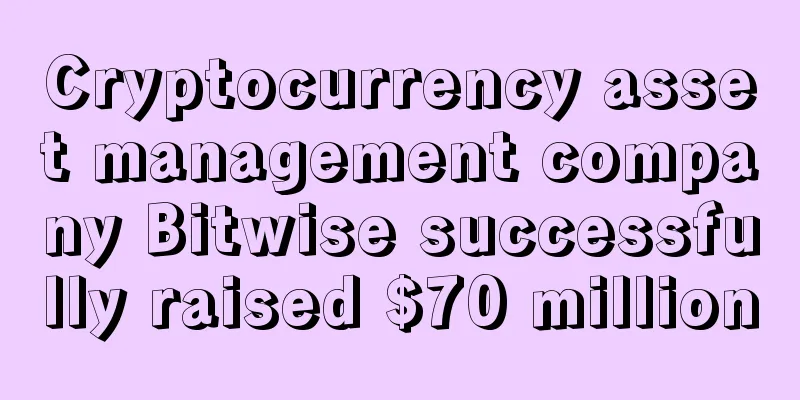EigenLayer has quickly attracted more than 9 billion US dollars. Will the staking track take off?

|
From the perspective of blockchain architecture, the public chain can be divided into the data layer, settlement layer, execution layer, and consensus layer. Ethereum plays an important role in the development of the Layer2 ecosystem, providing important tasks such as settlement and security consensus. However, since 2024, modular blockchains built on Cosmos have been popular in the market, such as Celestia , a modular blockchain for the data availability layer, and Dymension, a modular blockchain for the settlement layer. They simplify the complexity of building L2 and applications, and are subtly encroaching on the interests of Ethereum. On February 22, Ethereum co-founder Vitalik Buterin said in response to a user's tweet, "Honestly, compared to five years ago, I am 3 times less confident in the idea of simplifying L1, even at the expense of (building) a more complex L2; it is worth adding some complex functions to L1 to reduce the code burden of L2 and make L2 relatively simple. With the emergence of Restaking, Ethereum's counterattack has essentially begun. So, how does Restaking achieve secure sharing? What impact will it have on Ethereum? How to achieve safe sharing through re-stakingThe concept of restaking was first proposed by the founder of Eigenlayer, and the development of restaking is the result of the continuous upgrading of the staking track. In September 2022, Ethereum switched from POW to POS, and Ethereum holders became network validators by staking ETH, thereby ensuring the safe operation of the Ethereum network. However, the biggest drawback of Ethereum staking is the high threshold (32 ETH) and the lock-up period. In response to these problems, the derivatives of liquidity staking (LSD) form a pool of ETH pledged by retail investors, and the pledgers obtain ERC-20 derivative tokens minted by the protocol at a ratio of 1:1 (such as stETH issued by Lido ). These derivative tokens have strong liquidity and support trading and redemption. Restaking is simply understood as a secondary pledge of already pledged assets, and its staking motivation lies in the ability to obtain staking rewards and potential project airdrops. What is the significance of re-staking proposed by Eigenlayer? In the real world, oracles, DeFi , DALayer, etc. all require security. If the project does not have sufficient funds, it is difficult to establish its own verification node. In this context, Eigenlayer first proposed the concept of Restaking to meet this demand; and when the project adopts the security provided by Restaking, the market expects it to give airdrop rewards. So, how does Eigenlayer achieve security sharing through re-staking? Restaking provides four re-staking modes: native re-staking (direct staking of ETH), LST re-staking, ETH LP re-staking, LST LP re-staking (Note: LST (Liquid Staking Token) is a liquid staking token, such as Lido's stETH, Coinbase 's CbETH , etc.) From the white paper, its implementation mechanism mainly relies on two major mechanisms: pooled security and open market. The main operating principle of pooled security is that Ethereum validators can set their beacon chain withdrawal credentials to the EigenLayer smart contract and choose to build new modules based on EigenLayer. These modules can impose additional slashing conditions on the ETH staked by validators who choose to join the module. In return, validators can receive rewards from the staked credentials while also receiving additional income from projects using the AVS (Active Verification Service) service. Free Market Governance (Open marketplace): EigenLayer's open market mechanism is mainly used to manage how validators provide their pooled security and how AVS uses its pooled security. Validators can choose whether to join or exit each module built on EigenLayer. Each module needs to fully incentivize validators to allocate re-mortgaged Eth to its module, and considering the possibility of additional slashing, validators will help determine which modules are worth allocating additional pooled security. In other words, the original intention of free market governance is to establish a competitive market determined by both supply and demand. To put it bluntly, validators can freely choose which protocols to serve based on their own risks and rewards. In addition, in terms of the penalty mechanism, Eigenlayer has also greatly increased the cost of malicious attacks. The entire penalty is executed by smart contracts, which can punish malicious investors with up to 50% of their ETH. What re-pledge projects are worth paying attention to?According to Dune data, as of February 27, the TVL value on EigenLayer has reached 9.447 billion US dollars, the staked ETH has reached 2.8134 million, and the re-staking token (LRT) continues to rise. So, in addition to EigenLayer, what other projects are worth paying attention to? Kelp DAO is a multi-chain liquidity staking platform. Its founder previously founded the liquidity staking protocol Stader Labs . Stader is the second largest LSD protocol on Polygon and BNB Chain . Kelp DAO is currently building an LRT solution on EigenLayer, and its re-staking token is rsETH. ether.fi is a liquidity staking platform that launched its liquidity re-staking token eETH on November 15, 2023, allowing users to stake their ETH to receive staking rewards and automatically re-stake their ETH in EigenLayer without the need for users to manually complete the re-staking. eETH can be used in DeFi protocols such as Pendle , Curve , Balancer , Maverick , Gravita, Term Finance, Smmelier, etc. Stakestone is a one-stop full-chain LST staking protocol, benchmarked against Lido, which can bring native staking income and liquidity to Layer 2. It not only supports the top staking pool, but is also compatible with re-staking, and will integrate EigenLayer. StakeStone is also deeply involved in Manta's incentive activities. In Manta New Paradigm's $900 million TVL, StakeStone provided $720 million in liquidity. Entangle is a cross-chain DeFi protocol, whose products include Liquid Vaults, Oracles, and Photon communication protocols. Entangle is trying to enter the re-staking track. Users can deposit their LP tokens or staked tokens into Liquid Vaults to obtain 1:1 backed LSD, which can be used for re-staking or exchange. In January 2024, Entangle completed a $4 million seed and private placement round of financing, with participation from Big Brain Holdings , Launch Code Capital and other institutions. Karak is a modular Layer 2 with native risk management, re-staking and AI infrastructure. Currently, users can earn XP rewards on Subsea. On December 13, 2023, Karak developer Andalusia Labs completed a $48 million Series A financing round led by Lightspeed Venture Partners, with a valuation of over $1 billion. Omni Network is a re-staking blockchain that allows developers to access their applications across all Rollups. Omni validators need to re-stake their ETH to participate in the network consensus. Omni introduces a unified global state layer, which is secured by re-staking EigenLayer. Its re-staking can be used for cross-chain communication, lending, etc. between different Rollups. In April 2023, Omni Network completed a $18 million financing, with participation from Pantera Capital , Two Sigma Ventures , Jump Crypto , Hashed , The Spartan Group, etc. AltLayer is a Rollup as a Service protocol. In December 2023, EigenLayer partnered with AltLayer to launch Restaken Rollups. AltLayer expects to offer Restaked Rollups as a single bundle so that Rollup users can benefit from single-point integration. Restaked Rollups can integrate features such as decentralized ordering, fast finality, composability, etc. into a single Rollup. AltLayer is also one of the first 8 partners to use EigenDA to achieve data availability. SS V Network is a decentralized open source ETH staking network based on distributed validator technology (DVT). According to a tweet on January 4, SSV will cooperate with EigenLayer to complement re-staking, claiming that a "mainnet" EigenLayer validator is running on SSV. At the same time, both EigenLayer and stakers can choose to transfer the responsibilities of the validator to SSV and maintain the re-staking status of ETH on EigenLayer to obtain additional benefits from the SSV incentive mainnet. How will re-staking affect Ethereum?In 2023, Bitcoin inscriptions were hot, and then Solana also saw a further rise in the Depin and Meme craze. Although Ethereum had a Layer2 narrative, it had actually been tepid. In particular, the modular blockchain on Cosmos further impacted Ethereum's interests. In fact, it was not until the emergence of re-staking that Ethereum's narrative was recognized by the market again, and the price trend of the currency actually reflected this feature. So, how do crypto Vs view the development of re-staking? Zhu Su posted on the X platform that he does not currently believe that Eigenlayer re-staking will pose a significant risk, but if users borrow ETH and then re-stake ETH, and continue to operate on Eigenlayer, the situation will be different, because this will lead to the possibility of ETH liquidity pull, interest rate increases, and then negative spread liquidation. Crypto @lanhubiji: Binance invested in Renzo and Puffer in the re-staking track. In addition, there are Kelpdao, Swell, Etherfi..., which is getting more and more crowded. As a partial embodiment of Ethereum security, Eigenlayer has taken on a lot of responsibilities in this cycle, especially when the modular era begins. Crypto V @yushuobtc: Recently, A16z and Binance have been investing in liquidity re-pledge agreements. As the two largest investment institutions in the cryptocurrency circle and the beacon institutions in the last round, there will definitely be a huge wave of opportunities in the re-pledge sector in the future. Binance's new coin #ALT is currently priced at US$0.565, which is a good investment target. You can look for opportunities to enter the market in batches. SummarizeIn the context of the endless changes in crypto narratives, re-staking is undoubtedly the most important narrative of Ethereum in this round. Eigenlayer has improved the efficiency of asset operation on Ethereum to a certain extent, and has also extended the security consensus on the Ethereum main chain. With the explosion of the application ecosystem, Eigenlayer also has a broad development prospect. However, from a risk perspective, the Eigenlayer project is still in its early stages of development and has its own risks. Overall, with the development of modularization, Eigenlayer's model is quite imaginative, which helps projects deploy applications in a fast, convenient and low-cost manner. |
<<: Grayscale: Bitcoin will hit a new high this year
>>: Bitcoin purchase + hosting one-stop service platform
Recommend
The second Bitcoin expansion seminar is coming, is BIP 101's last ditch effort?
Editor's note: The issue of Bitcoin block exp...
The facial features of a woman with great fortune
We all desire to be a blessed person, and I hope ...
How to read the forehead of a woman
In physiognomy, the forehead represents a person&...
The choice between gold and Bitcoin
Gold has been used as a transaction medium for th...
Three facial features of a person who is cunning and inhumane
1. Pointed head Head shape is also very important...
How to read your partner's face through the Tianzhai Palace
In fact, how can we directly see the face of our ...
What does a mole on the palm mean? Four explanations to help you answer
It is very rare to have a mole on the palm. I bel...
EMD, the suspected absconding EOS project, responded: Willing to return 120,000 EOS, but the investigation needs to be stopped
According to BlockBeats, on September 10, the sus...
What does it mean for a man with thin lips?
The mouth is one of the five facial features and ...
The impact of the Fed’s rate cut on Bitcoin
On September 18, 2024, the Federal Reserve cut in...
Right hand fingerprint reveals your love outlook
Fingerprints are a lifelong mark that remains unc...
Agency Problems and Economic Efficiency of Blockchain Systems
The invention of Bitcoin in 2008 marked the begin...
Why the European Banking Authority Will Set a Precedent for Bitcoin Startups
Rage Review : It usually takes 6-12 months for Bi...
How is the size of the eyes?
How is the size of the eyes? Big and small eyes, ...
Keep your eyes open and beware of these five Bitcoin scams
Summary : As consumers continue to increase their...









